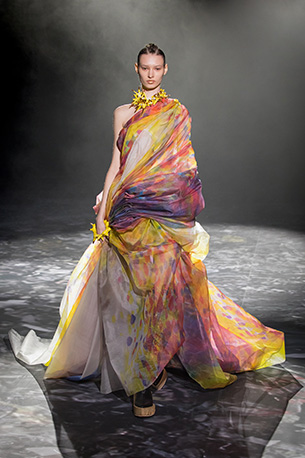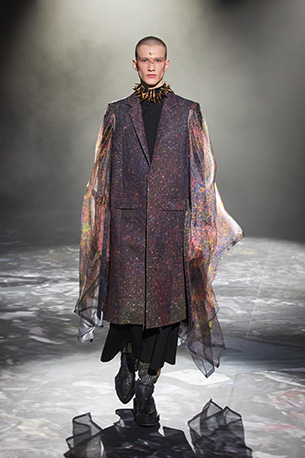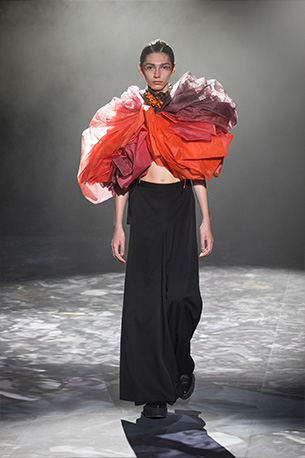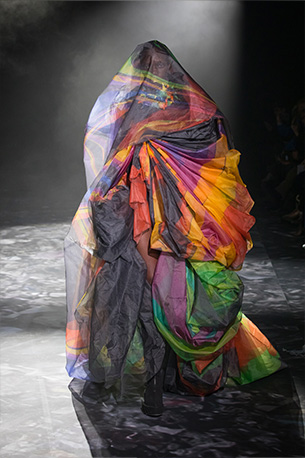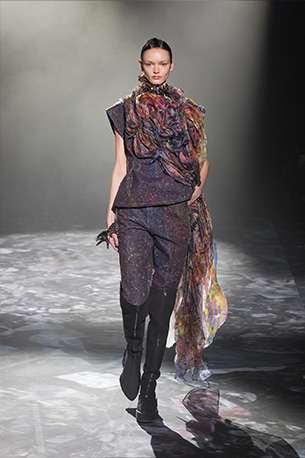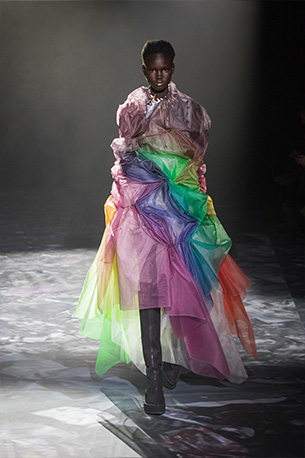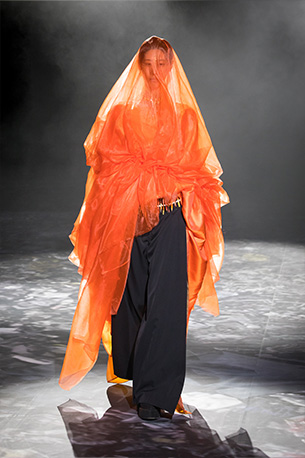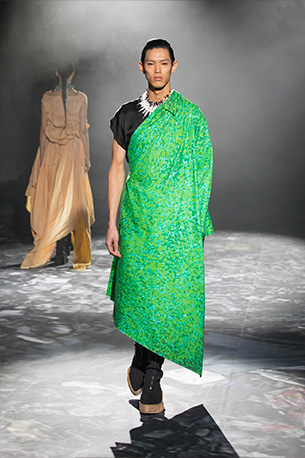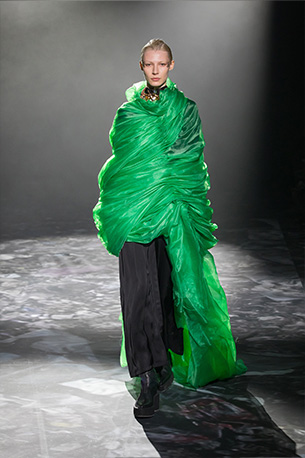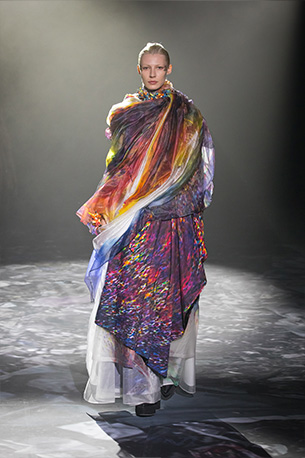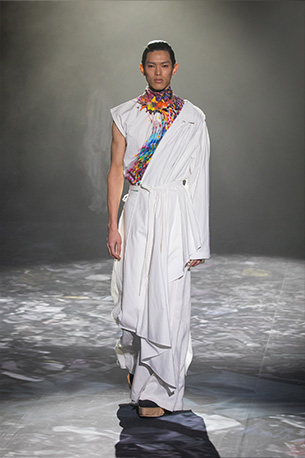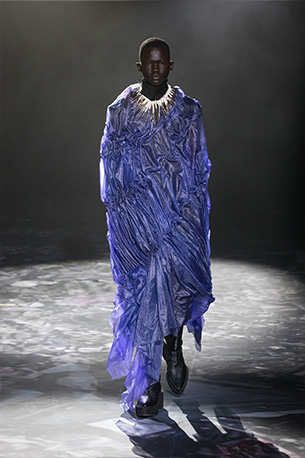The future of fashion co-created with YUIMA NAKAZATO


YUIMA NAKAZATO's collection was presented at Paris Haute Couture Fashion Week Spring - Summer 2023, on January 25.
Epson used its digital textile printing technology and Dry Fiber Technology to support the production of the designs in the collection, which featured upcycled fashions made using used garments.
Epson is working with YUIMA NAKAZATO to evolve the value chain in the fashion industry by providing technology, processes, and schemes that enable the lower environmental impact production of high-quality custom clothing.
Fashions Created Using Digital Prints, with a Focus on Environmentally Friendly Processes
More than 70 of Yuima Nakazato's designs were rendered by an Epson Monna Lisa digital textile printer on a total of four fabrics, one cotton and three silk organdy fabrics. Taking full advantage of the plateless nature of direct-to-fabric digital textile printing, we repeated the process of "creating while making," and printed the clothes until one week before the show in order to improve their perfection.
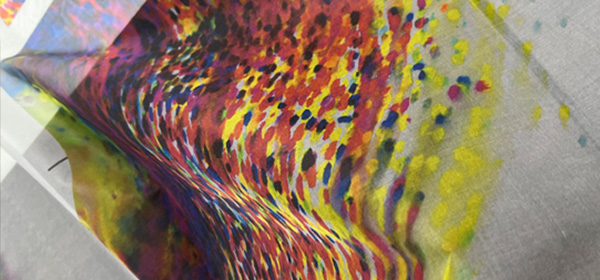
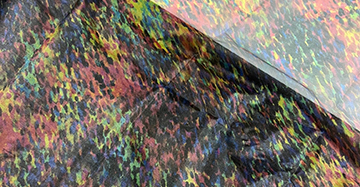
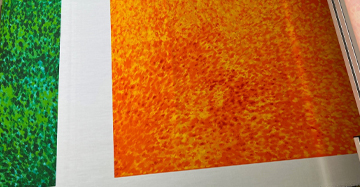
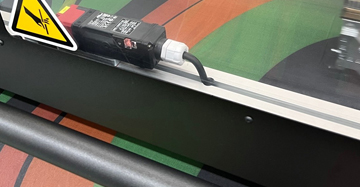
Nakazato drew inspiration for the designs in this collection from landscapes he saw in Africa. He traveled to drought-stricken areas and experienced for himself what a precious resource water is. For these prints, therefore, great care was taken to minimize the use of water, and pigment inks were used along with a process that eliminated the need for post-printing steaming and washing.




The textiles were printed at Epson's Solution Center in Fujimi, Nagano Prefecture. The Solution Center offers technical support, with textile printing "sommeliers," who recommend the best ink, fabric conditioning, and post-printing processes for the textiles being used.

Exploring the Upcycling of Used Garments
Epson used its Dry Fiber Technology1 to support the production of the collection, which features upcycled fashions from material from used garments sourced from Africa, the destination for many discarded garments from elsewhere in the world, and Nakazato procured what he needed in Kenya. The clothing in this collection was based on black, accented with articles made from sheets of nonwoven fabric produced from used clothing in red, blue, navy, yellow, and purple.
1 Dry Fiber Technology produces highly functional materials by defibrating which requires virtually no water, binding, and forming fibrous materials as needed depending on the application. For details, please click here.
 ©Luca Tombolini
©Luca Tombolini

The used garments were used to produce a total of 50-meters' worth of nonwoven fabric sheets that were then printed with Nakazato's designs in pigment ink on a Monna Lisa digital textile printer. Ultimately, these were used, along with silk prints, to create new, upcycled garments. The use of upcycled textiles in clothing is still in the experimental stage, but Yuima Nakazato and Epson will continue to conduct joint research to drive advances.
Original Printed Works Used in the Venue Decoration
Epson's digital printing technology was also used in the production of pieces used to present the vision behind the collection. Photos taken in Africa were printed on matte paper and enlarged to cover the entire venue. These prints were first tested in Japan and then color-managed and printed by a printing company in the Paris suburbs near the site of the show.
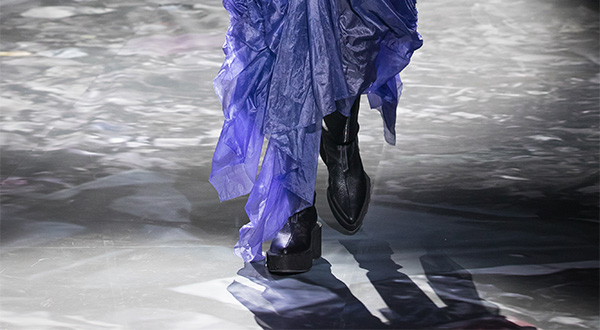 ©Luca Tombolini
©Luca Tombolini



